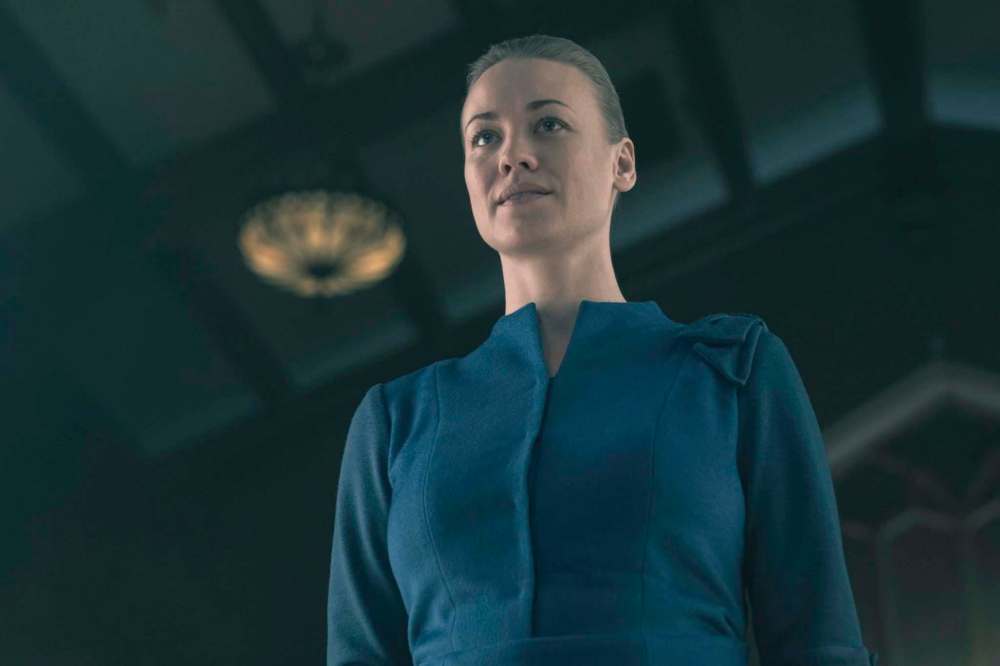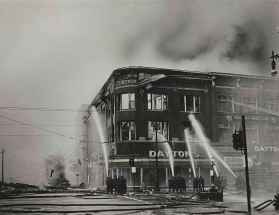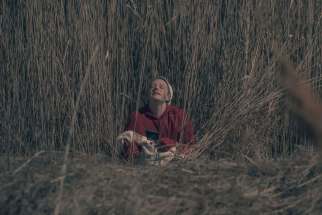Never-ending dystopia Handmaid's Tale hampered as writers can't let harrowing story end just yet
Read this article for free:
or
Already have an account? Log in here »
To continue reading, please subscribe:
Monthly Digital Subscription
$0 for the first 4 weeks*
- Enjoy unlimited reading on winnipegfreepress.com
- Read the E-Edition, our digital replica newspaper
- Access News Break, our award-winning app
- Play interactive puzzles
*No charge for 4 weeks then price increases to the regular rate of $19.00 plus GST every four weeks. Offer available to new and qualified returning subscribers only. Cancel any time.
Monthly Digital Subscription
$4.75/week*
- Enjoy unlimited reading on winnipegfreepress.com
- Read the E-Edition, our digital replica newspaper
- Access News Break, our award-winning app
- Play interactive puzzles
*Billed as $19 plus GST every four weeks. Cancel any time.
To continue reading, please subscribe:
Add Free Press access to your Brandon Sun subscription for only an additional
$1 for the first 4 weeks*
*Your next subscription payment will increase by $1.00 and you will be charged $16.99 plus GST for four weeks. After four weeks, your payment will increase to $23.99 plus GST every four weeks.
Read unlimited articles for free today:
or
Already have an account? Log in here »
Hey there, time traveller!
This article was published 07/06/2019 (2383 days ago), so information in it may no longer be current.
The Handmaid’s Tale, which imagines a dystopian society in which women are reduced to chattel under a militaristic religious regime, heads into its third season this weekend (starting Sunday on Bravo and Crave).
TV preview
The Handmaid’s Tale
Season 3 première
Starring Elisabeth Moss, Joseph Fiennes, Yvonne Strahovski, Bradley Whitford and Ann Dowd
● Begins Sunday (check listings)
● Bravo, Crave
Having long since left behind the austere outlines of Margaret Atwood’s source material, showrunner Bruce Miller has been free to try new directions.
But in many ways, he’s fallen into a familiar rut, one that has become increasingly common in popular series television: The Handmaid’s Tale needs to keep the narrative going by fending off any kind of clear conclusion.
For all its compelling aspects, then, the series sometimes feels caught in a (particularly vicious) loop. June (Elisabeth Moss) is tortured and beaten. June silently rages. June vows to burn it all down. June almost escapes and then doesn’t escape.
Like June, the show needs to bust out in its third season. But how?
https://youtu.be/RcTvQx1Wot0
So far, the narrative has veered between demonstrating the deadening control of Gilead — a break-off faction of America — and exploring the plight of the women trapped there, who are brutalized by rape and abuse but sometimes pull off short, sharp bursts of their own subversive power.
The narrative toggles between extremes, sometimes stretching plausibility — why has the rebellious June not been strung up on the wall? — and sometimes bogging down in redundancy.
At the end of Season 1 we saw June and the handmaids doing a slow-mo swagger walk to a Nina Simone song, all red-clad symbols of self-empowerment. (“They shouldn’t have given us uniforms if they didn’t want us to be an army,” says June.)

Then we had the cruelties of Season 2, which infamously started off with a mock mass execution. Caught in narrative circles, the writers kept things interesting by making them more extreme — with more hangings, more mutilations, more torture, more violence.
To get out of this cycle and move the story forward, June and the resistance movement need to go beyond those badass-handmaid meme moments and get into some real action.
We could be heading toward that. In Season 3, June realizes she needs allies, especially “allies with power.” This will mean teaming up with characters who have done appalling things, which means more of June’s up-and-down relationship with Serena Joy (Yvonne Strahovski), an increasingly conflicted member of Gilead’s ruling elite, as well as an unpredictable alliance with a new character.

Glimpsed at the close of Season 2, the enigmatic Commander Joseph Lawrence is back in Season 3, played with malevolent nonchalance by Bradley Whitford.
Commander Lawrence is a slippery fellow, an economist whose theories undergird Gilead’s 19th-century-style prosperity. He’s powerful enough to have modernist art on his walls and Darwin on his bookshelf — which would be a crime for anyone else — but he’s also the intellectual architect of a society that hates intellectuals.
The commander has helped to smuggle handmaid Emily (Alexis Bledel) out of the city, but he also seems to get a weird kick out of petty cruelties. Is he a self-loathing cynic? A sadistic sociopath who likes to set up life-and-death scenarios just to see how they play out? It should be interesting to find out.

Season 3 also explores some new settings, including a vision of Toronto that might feel fresh even to Canadians.
Canada is a common feature in American dystopias, with desperate characters frequently lighting out for the northern border. In Season 3, the show gives us more information about the situation of Gilead’s refugees, including June’s husband Luke (O-T Fagbenle), as they adjust to a seeming paradise of polite bureaucrats and nice Mounties and universal health care.
The other new location involves a hellish field trip to Washington, D.C., which allows plenty of scope for the series’ trademark visual flair, especially those strange, Busby Berkeley-like spectacles of synchronized handmaids.
There are some much-needed new developments in the early episodes of Season 3, but it’s too early to say where they will go.
Still, if the show disappoints, we can always see what Atwood herself does: she’s releasing a sequel to her 1985 novel this fall.
alison.gillmor@freepress.mb.ca

Studying at the University of Winnipeg and later Toronto’s York University, Alison Gillmor planned to become an art historian. She ended up catching the journalism bug when she started as visual arts reviewer at the Winnipeg Free Press in 1992.
Our newsroom depends on a growing audience of readers to power our journalism. If you are not a paid reader, please consider becoming a subscriber.
Our newsroom depends on its audience of readers to power our journalism. Thank you for your support.









